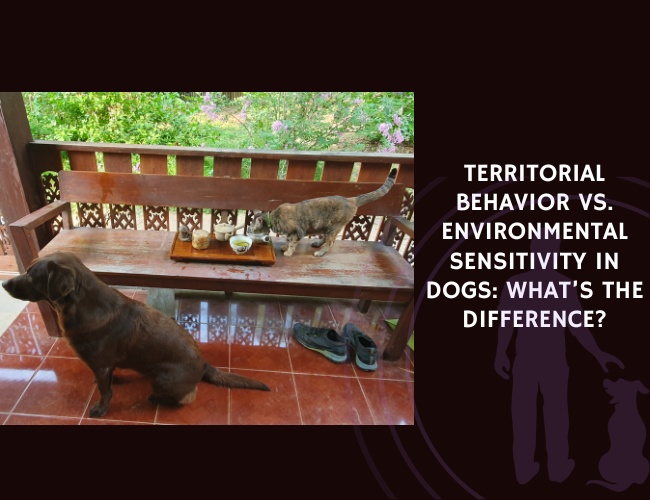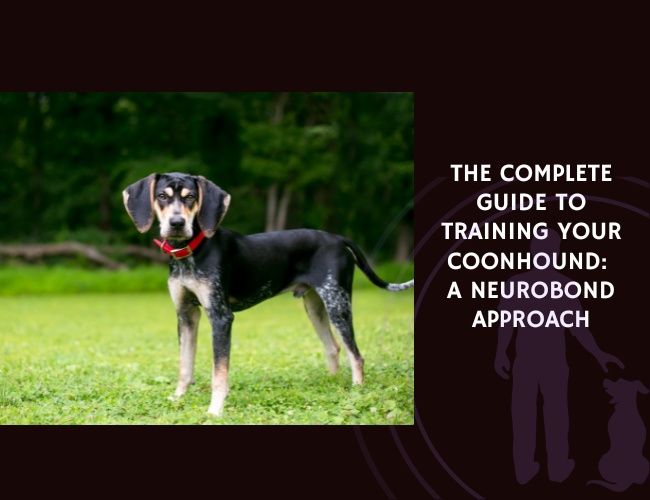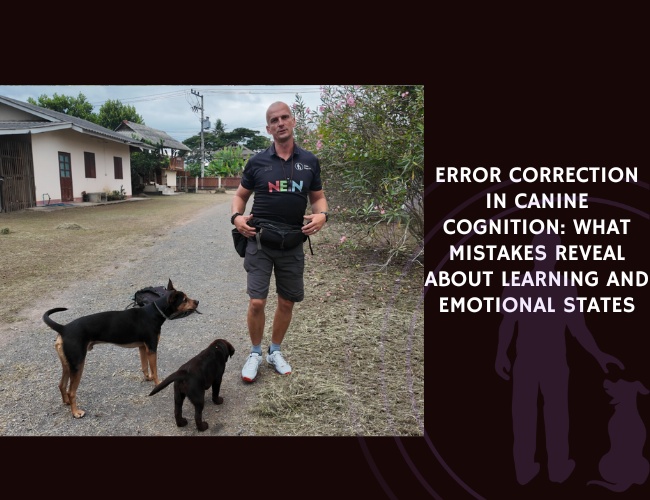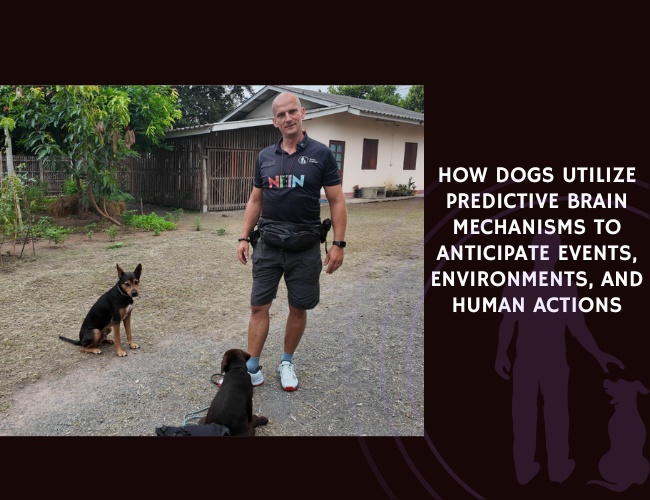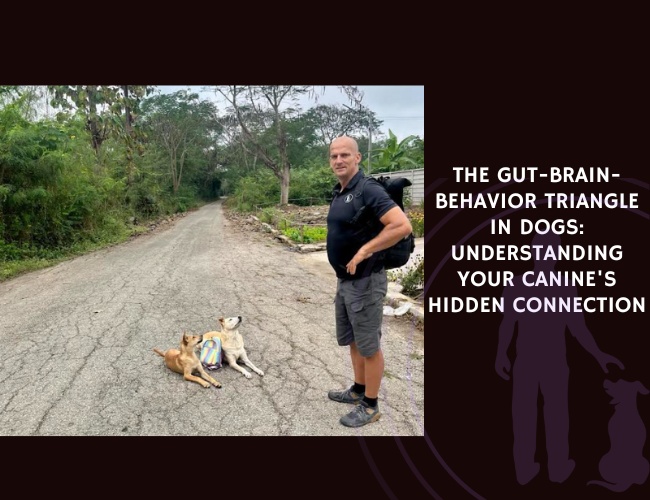Introduction: Understanding Canine Behavioral Responses
Why Distinguishing Matters
When your dog barks at the window or cowers during a thunderstorm, it might look similar on the surface. But what’s actually going on inside your pup can be very different. Learning whether your dog is showing territorial behavior or is sensitive to their environment isn’t just for curiosity—it’s important for their well-being.
Misunderstanding these behaviors is more common than you might think. If you mix them up, training can go off track quickly. For example, using the wrong strategy can create more stress for your dog and might make behaviors worse over time. For pet parents and trainers, guessing the cause can lead to frustration and an unhappy household.
Impact of Misdiagnosis
Getting it wrong can be more than just an inconvenience. Treating a sensitive dog with strategies meant for territorial aggression, or vice versa, not only fails to solve the issue but can actually increase fear and anxiety in the dog. This problem can become serious in multi-dog homes or shelters, where misunderstandings make for unsafe or stressful living situations. That’s why clear and confident behavior assessments are essential to every training plan and welfare decision.
The Scientific Approach
A scientific approach helps us spot the differences with confidence. Territorial behavior in dogs comes from their evolutionary need to defend spaces and resources. It’s usually marked by confident or assertive actions aimed at protecting territory. In contrast, environmental sensitivity is rooted in how dogs process sensory information. Dogs on this end react to bright lights, loud sounds, or even subtle changes in environment by withdrawing or seeking to escape these triggers.
Careful observation of context, posture, and triggers is key. Looking at hormone patterns, brain responses, and even startle reflexes helps pinpoint the true motivation driving your dog’s reaction. This is how behaviorists and trainers decide the best way to help both territorial and sensitive dogs thrive.
With a clear understanding of these motivations, you’re ready to explore the unique roots behind each type of canine behavior.
Defining Territorial Behavior in Dogs
Instinctual Drives and Protective Behavior
Territorial behavior in dogs is all about protecting what they consider theirs. This can be space, toys, food, or even people. When dogs act territorial, they’re not just being stubborn—there’s an instinctual drive at play. This behavior goes deep, rooted in how wild dog ancestors survived: by guarding their territory, they ensured steady access to food, shelter, and mates. So, when your dog barks at the mail carrier or lunges at someone nearing the fence, it’s an age-old instinct kicking in.
Evolutionary Roots in Pack Animals
Long before domestication, dogs’ wild relatives lived in packs. Each group needed clear territory to hunt and raise young, making boundaries crucial for survival. That’s why, even today, many dogs have an automatic urge to defend their home. This instinct hasn’t vanished; it’s just taken on new meaning in our modern world. For today’s pets, their “territory” might be your house, yard, or even a favorite spot on the couch.
Influence of Genetics, Socialization, and Experience
While all dogs have some level of territorial drive, not every dog reacts the same way. A few key factors can turn up—or tone down—the volume on this trait:
- Genetics: Some breeds were developed specifically to guard property or herd livestock, which can strengthen territorial instincts.
- Socialization: A dog who met lots of visitors and traveled to new places as a puppy may be less intense about defending the home.
- Past experiences: If dogs had to fight for food or attention early in life, they might be more likely to guard what’s “theirs” later on.
Understanding what’s behind your dog’s territorial behavior helps us select the right tools and approaches for healthy training. It’s all about working with their natural instincts, not against them, so everyone can feel safe and comfortable without unnecessary stress.
Next, let’s explore how some dogs are wired to react not just to who enters their territory, but to the environment itself, leading to an entirely different set of behaviors.
Understanding Environmental Sensitivity
What is environmental sensitivity?
Some dogs react to their world in a big way. Environmental sensitivity means a dog has a low tolerance for sensory input—things like sights, sounds, smells, or even changes in their daily routine can feel overwhelming. Unlike territorial responses, these dogs are not trying to defend their space. Instead, they’re simply reacting to how strong, new, or unexpected things make them feel.
When a dog experiences environmental sensitivity, even a relatively quiet noise or a mild scent can trigger signs of stress. This is known as sensory processing sensitivity or environmental hyperreactivity. In practical terms, your dog might flinch at a new object on your walk, or hide when the vacuum cleaner runs. These dogs are not dramatic—they just have more sensitive nervous systems.
Why does it happen?
Environmental sensitivity is shaped by genetics and early life experiences. Some breeds seem more prone to this, suggesting a hereditary link. Early experiences matter too: a puppy raised in a noisy, unpredictable setting, or one who faced frequent changes, may struggle more with sensory overload in adulthood.
But genetics are not destiny! A dog with sensitive parents may be more likely to be sensitive, but gentle handling and positive early socialization can help. Conversely, even a dog with “confident” genes may become sensitive if exposed to chronic unpredictability or frightening events when young.
How does it look in daily life?
Dogs with high sensitivity tend to:
- Startle easily at noises
- React strongly to new sights or unusual smells
- Avoid busy places or hide during thunderstorms
- Show physical signs of stress: tail tucking, yawning, lip licking, or freezing
- Seem hesitant or anxious even in familiar places if there’s a new sensation
This is not about being stubborn or disobedient. Their brains and bodies simply process the world more intensely.
Understanding whether a dog is defending “territory” or just reacting to overwhelming stimuli guides owners and trainers toward the best support. A responsive and gentle approach will build a sense of security in sensitive dogs, helping them feel safe in the world around them.

Key Differences in Motivation and Response
Motivation: Defense vs. Escape
Let’s break down what drives these two behaviors in dogs. Dogs with territorial motivations act out of a need to defend their space or prized resources. When a stranger or animal approaches their home, yard, or favorite person, these dogs go on alert. Their main goal? Actively keeping the “intruder” at bay.
By contrast, dogs who are environmentally sensitive are not looking for a fight. Instead, their core motivation is to avoid or escape from things that overwhelm them—think loud noises, sudden movements, or strange sights. They aren’t defending space; they’re simply trying to reduce discomfort.
Behavioral Signals: Assertiveness Versus Anxiety
These different motivations lead to very different body language and actions:
- Territorial dogs show classic assertive or aggressive behaviors. You’ll notice barking, growling, lunging, or patrolling at doors and fences. Their ears are up, posture forward, and they often mark boundaries with scent or even by scratching.
- Environmentally sensitive dogs, on the other hand, look visibly uncomfortable. Common signals include tail tucked, lip licking, yawning, freezing in place, trying to hide, or being hyper-alert to their environment. They may pant a lot, shake, or give you “whale eye”—showing the whites of their eyes.
Role of Context
Context is everything. Territorial dogs can be calm, relaxed pets when at home alone with their family—but turn reactive when someone gets too close to their personal space. The territorial response is all about where the dog perceives its boundaries.
For environmentally sensitive dogs, reaction is less about who’s there and more about what’s changing in the environment. Context can play a part—some may feel a bit safer at home—but a strong enough sound or movement will still send them into stress mode. Instead of defending a location, these dogs want relief from what feels overwhelming, wherever they are.
Recognizing these patterns helps guardians and trainers respond in supportive, effective ways—making a world of difference in a dog’s well-being.
Neurological and Hormonal Mechanisms
Understanding the brain and hormone patterns behind canine behavior helps us know why dogs react the way they do. Let’s look at how different systems in a dog’s body shape reactions that appear as territorial aggression or environmental sensitivity.
Brain Regions Behind the Behavior
Territorial responses start inside the limbic system, a key part of the brain responsible for emotional reactions. Two areas here—the amygdala and the hypothalamus—are especially important:
- Amygdala: This brain region is like the dog’s “alarm bell.” It scans for threats and triggers aggression or defensive behavior when the dog feels its territory is threatened.
- Hypothalamus: It regulates things like heart rate and stress hormones. When the amygdala sounds the alarm, the hypothalamus helps the body react—racing heart, tensed muscles, and more.
Another part, the prefrontal cortex, helps dogs control impulses and respond calmly. But if a dog gets too worked up, this control can be lost, making them snap or bark suddenly.
Stress Hormones: The Body’s Alarm System
When either territorial or environmental triggers appear, a dog’s body pumps out stress hormones like cortisol and norepinephrine. These hormones fuel the body’s “fight or flight” mode.
- Territorial dogs usually get a rush of these hormones in response to very specific triggers, like an unknown person on their property.
- Environmentally sensitive dogs, on the other hand, release these hormones to all sorts of things—loud noises, sudden changes, even new smells. This makes them more likely to feel anxious or on edge even in safe places.
Startle Reflexes and Sensory Gating Challenges
Environmentally sensitive dogs often show exaggerated startle reflexes. This means even small, harmless things can make them jump, shake, or freeze. Their brains have trouble filtering out minor stimuli—a process called sensory gating. As a result, these dogs can get overwhelmed much more easily and may develop ongoing anxiety.
Territorial dogs do not usually struggle with sensory gating unless their triggers match a threat to their perceived territory or resources.
Understanding these neurological and hormonal mechanics isn’t just scientific trivia—it’s the key to tailoring support and training for every dog’s unique needs. By looking beneath the surface, we can better recognize what drives behaviors and prepare for overall well-being.
Guard. Flee. React.
One barks to protect. The other trembles to survive. Yet both stand at the window. Both raise your pulse. And both demand something different from you—if only you could tell which is which.
Not Every Noise Is a Threat.
Territorial dogs hold their ground. Sensitive dogs just want the ground to stop shaking. But if we confuse anxiety with aggression, we punish fear. And if we treat guarding like nervousness, we miss the moment to lead.
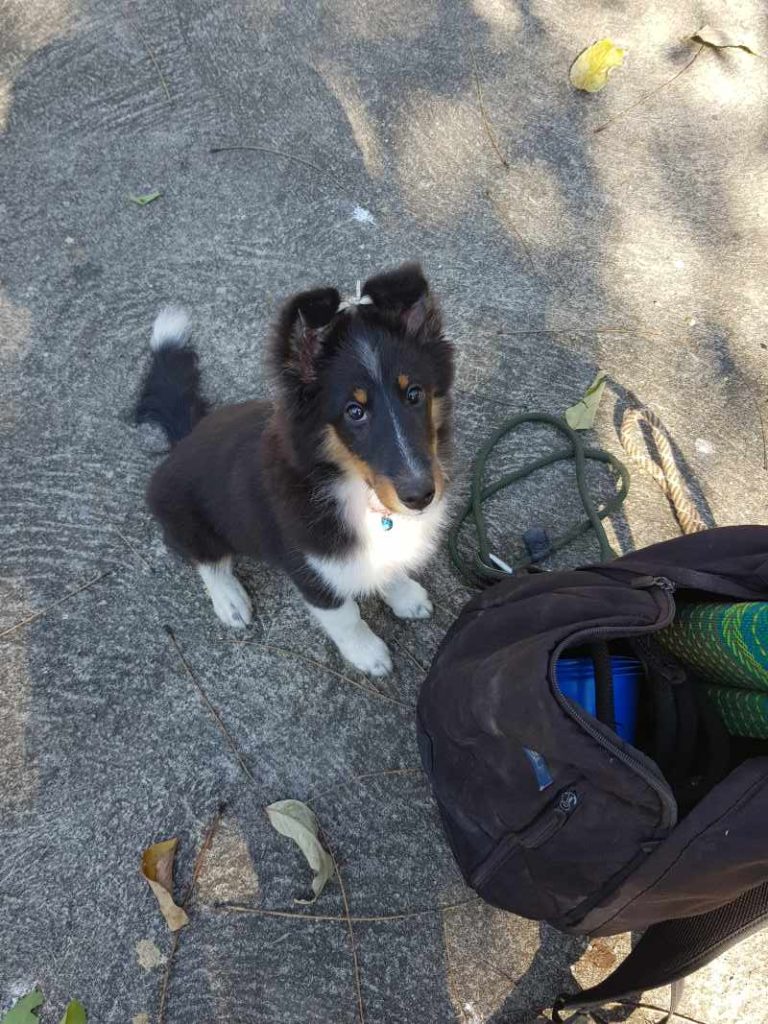

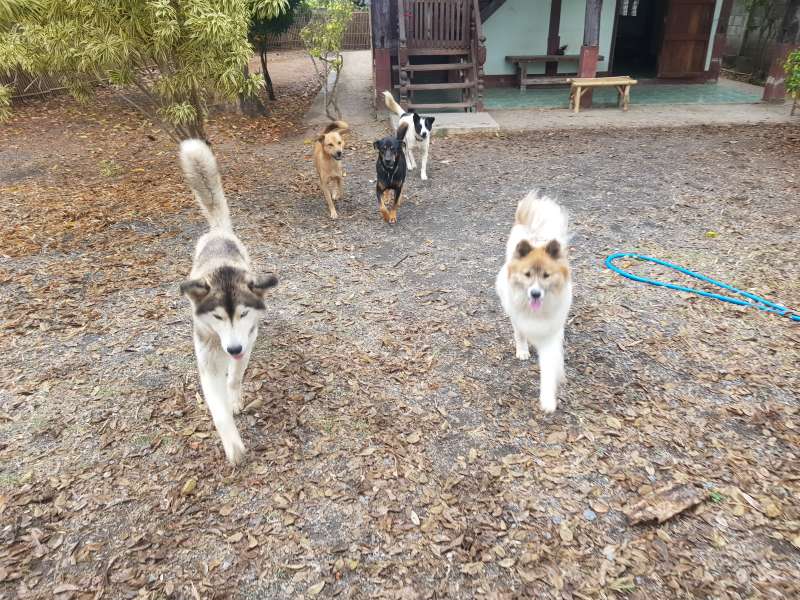
Confusion Creates Conflict.
A misread behavior becomes a misstep. A misstep becomes a pattern. And a pattern becomes a problem we caused. But if we look closer—at posture, purpose, and pattern—we find a chance to help the dog before the breakdown.
Recognizing Behavioral Markers
Spotting Signs of Territorial Aggression
Understanding your dog’s behavior starts with knowing what to look for. Dogs showing territorial aggression often do so when someone or something approaches their space. You might notice your dog:
- Barking, growling, or snarling at people or other animals approaching doors, windows, or fences
- Lunging, snapping, or even biting if the “intruder” doesn’t back away
- Patrolling property lines or blocking entryways
- Marking boundaries with urine or scratching, even indoors
These actions are your dog’s way of actively saying, “This is my turf!” Territorial dogs usually appear confident or alert, holding their bodies tall and sometimes even puffing up to look bigger.
Recognizing Sensory Overload and Environmental Sensitivity
Dogs who are environmentally sensitive behave differently when faced with overwhelming sights, sounds, or smells. Instead of acting tough, these dogs display classic stress signals, including:
- Tail tucked between the legs
- Lip licking or repeated yawning
- Freezing in place or trying to hide
- Whale eye (showing the whites of their eyes)
- Hypervigilance—constantly scanning their environment
- Excessive panting, shaking, or pacing
These behaviors often aren’t about defending territory but about trying to escape or cope with anxiety caused by sensory input. You might even see several of these signs grouped together if the dog faces a strong or sudden stimulus.
Context Is Key: Reading the Whole Picture
Context matters a lot in figuring out what’s driving a dog’s reaction. Here are a few tips:
- Territorial aggression usually ramps up near familiar places like the dog’s home, yard, or even the owner’s car.
- Environmental sensitivity can show up anywhere, not just at home—think fireworks at a park or loud trucks on a walk.
- Compare the dog’s behavior in different settings. A territorially aggressive dog may be calm at the park but reactive at home, while a sensitive dog might panic in both places if overwhelmed by noises or movement.
Identifying these patterns helps figure out what your dog needs to feel safe and calm. By watching for these markers and considering the surroundings, you’re better equipped to support your dog’s emotional health and make informed choices about training and care.
This approach paves the way for more specialized support tailored to each dog’s unique needs.
Effective Training Approaches for Territorial Dogs
Building a Safer Environment
When working with territorial dogs, management is step one. Keeping your dog—and others—safe starts with secure boundaries. Make sure fences, gates, and windows are sturdy and free of gaps. This limits a dog’s opportunity to react to people or animals approaching their space. Controlled access means you decide when and if your dog interacts with certain triggers, like visitors at the door or people on walks near your property line.
Check your yard regularly for holes or weak spots.
Use baby gates indoors to manage movement in the house.
Let friends know your “house rules” before visits so everyone feels comfortable.
Counter-Conditioning: Changing the Emotional Response
Territorial behavior is often rooted in a dog’s need to protect what they see as theirs. With counter-conditioning, the aim is to help your dog form positive associations with what once felt threatening. Start with the trigger (like a delivery person) at a distance where your dog feels calm. Every time the trigger appears, reward your dog with treats and praise. Over time, the dog starts to associate the presence of these “intruders” with good things happening.
Key points for success:
- Stay calm and patient—progress may be slow.
- Avoid scolding; it increases anxiety or aggression.
- Keep sessions short and positive.
Controlled Exposure at Territory Boundaries
Territorial reactivity is usually strongest at the edges of a dog’s “home turf,” such as near fences, doors, or windows. Controlled exposure means introducing the trigger at the boundary in a way that lets your dog succeed. For example, invite a friend to approach the gate, step back when your dog stays calm, and reward the calm behavior. Gradually increase the challenge, always setting your dog up to win at each stage.
Tips for effective boundary work:
- Start with low-intensity versions of the trigger.
- Practice at a distance before bringing the trigger closer.
- Celebrate small wins with extra special treats or play.
A tailored approach like this not only lowers reactivity but also helps build your dog’s confidence.
You’re fostering a dog who feels secure—one step at a time—while protecting the safety and wellbeing of everyone involved.
Let’s continue exploring how training strategies differ for dogs that are environmentally sensitive.

Training Strategies for Environmentally Sensitive Dogs
Creating a supportive environment for dogs that are highly sensitive to their surroundings is key to helping them thrive. Environmental sensitivity means a dog reacts strongly to everyday sights, sounds, smells, or changes. These reactions are usually about feeling overwhelmed rather than wanting to protect territory.
Building Calm and Predictable Spaces
The first step is to create a calm and predictable home. Keep routines consistent: meals, walks, and rest should happen at the same times each day. Dogs with environmental sensitivity feel more secure when they know what to expect. Try to reduce sudden noises and unexpected changes in the environment. If possible, give your dog a safe haven—a quiet room or cozy crate—where they can retreat when things get too loud or busy.
Desensitization: Taking Baby Steps
Desensitization means slowly introducing your dog to the things that bother them, but in a gentle, controlled way. The secret is to start with a version of the trigger that is barely noticeable to the dog. For example, if your dog gets nervous around vacuum cleaners, start by having the vacuum in the room without turning it on. While your dog stays relaxed, reward them with treats or praise. Gradually increase the challenge only as your dog stays calm, such as turning the vacuum on for just a second, and then longer over time.
Counter-Conditioning: Making New Associations
Counter-conditioning helps your dog build positive feelings about former stressors. Pair something your dog fears—like a loud noise—with a reward, such as a tasty treat or their favorite game. With repetition, your dog learns to expect good things when the trigger appears, which can turn anxiety into anticipation. It is important to go at your dog’s pace and stop if they seem stressed or overwhelmed.
Small changes, patience, and positive reinforcement are your greatest tools when supporting an environmentally sensitive dog. With these strategies, many dogs show remarkable growth and confidence as they encounter their world.
Risks of Misdiagnosis
The hidden problems of getting it wrong
When working with dogs, mistaking territorial behavior for environmental sensitivity or vice versa can bring unexpected challenges. It’s not just a training hiccup—this confusion can have real consequences for your dog’s happiness and well-being. Let’s break down why accurate assessment is so critical.
Worsening behavior and well-being
If a territorial dog is treated as though it’s environmentally sensitive, the solutions offered may miss the mark. For example, a territorial dog has the instinct to actively defend its space, so using only calming strategies or generic desensitization can leave the root cause unresolved. This oversight might lead the dog to double down on defensive actions, increasing barking, lunging, or even aggression.
On the other hand, if an environmentally sensitive dog is misunderstood as territorial, exposing the dog repeatedly to stressful situations in an attempt to “normalize” their reaction can heighten their fear and anxiety. Instead of helping, you might see signs like tail tucking, freezing, and withdrawal intensify.
Group settings: extra complexity
Misdiagnosis can spell bigger trouble in multi-dog homes or shelter environments. An incorrect approach could set off tension between dogs, leading to more frequent conflicts or bullying. In shelters, staff might pair or house dogs poorly, not accounting for their true triggers. This may create a stressful atmosphere, hinder adoptions, and increase the risk of bites or injuries.
Why tailored interventions matter
Every dog’s motivation is unique, and that’s why one-size-fits-all methods rarely work. Customized training and management plans that address the underlying cause—whether it’s the urge to guard territory or a struggle to process sensory input—are vital for long-term success. Accurate diagnosis helps trainers, families, and shelter teams build a safe, supportive environment, paving the way for real behavioral progress and happier, healthier dogs.
Being observant, assessing context, and understanding each dog’s story is key to avoiding these pitfalls and supporting canine welfare throughout their journey.
Conclusion: Improving Canine Welfare Through Accurate Assessment
Why Getting It Right Matters
Understanding the difference between territorial behavior and environmental sensitivity can make a real impact on a dog’s life. When we misread these cues, we risk using the wrong training strategies, which often creates even more stress for our furry friends. A territorial dog might become more defensive if treated as environmentally sensitive, while a sensitive dog mislabeled as territorial could be pushed into situations that make their anxiety much worse. Accurate behavior assessment is the cornerstone for designing humane, effective training that matches each dog’s true needs.
The Benefits of Precise Diagnosis
Properly distinguishing these behaviors means you can
- Build trust between human and dog
- Reduce incidences of aggression and fear
- Help dogs feel safe, understood, and supported
When we know what motivates a dog’s reaction—whether it’s the urge to protect territory, or a strong response to overstimulating environments—we can create management and training plans that actually work.
The Role of Ongoing Research
Science keeps teaching us new things about dogs’ brains and behavior. There’s still a lot we don’t know about how genetics, hormones, and early experiences influence behavioral patterns. Continued research into diagnostic tools will help trainers and guardians spot the subtle signs that matter most. Tailored interventions, which are based on these fine-grained assessments, have the power to make a lasting difference for dogs at home and in shelters.
Toward a More Humane Future
A dog that gets the right help from the start stands a better chance at a happy, balanced life. The more accurately we assess canine behavior, the fewer dogs fall through the cracks due to misunderstandings—and the stronger the bond between dogs and people becomes.
With accurate, compassionate assessments, we move one step closer to a world where every dog gets the understanding and care they deserve.

